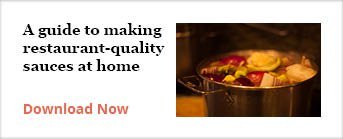
Leave it to the French to assert that there are really only five sauces, the Mother Sauces. The idea is that the five Mother Sauces are base sauces, and by adding additional flavorings or modifying the techniques slightly, those five sauces can become any sauce that you need. Conceptually the idea is brilliant and in fact, the notion simplifies the world of sauces, but it happens to ignore the masterful sauces made around the world such as pesto, salsa, mole, curry and chimichurri.
With all due respect to the intricate and immensely delicious sauces made in countries outside France, it seems that the techniques associated with the classic French sauces are the ones that confound our students. With a solid recipe, most of our students can navigate a pesto or a salsa on their own. But when we start to explore the five Mother Sauces: Veloute, Bechamel, Espagnole, Hollandaise and Tomato and throw out words like roux, emulsion, reduction or stock, we are more apt to observe a sense of panic in the room.
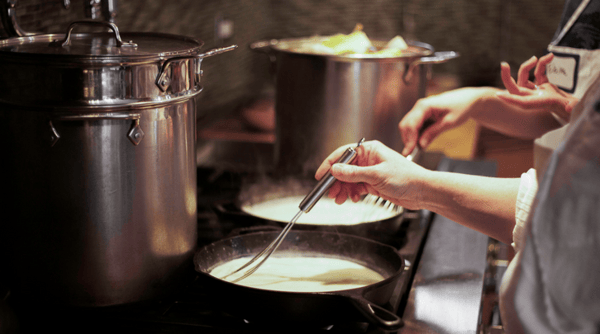
In this blog series, my goal is not to teach you everything that you need to know about sauce making. I would certainly recommend taking our Sauce Boot Camp for that. Instead my intention is to share what I think some of the most important techniques and tips are to improve your results and make the process seem approachable. I will demonstrate to you how techniques overlap, as well as challenge some of the conventional notions of sauce making.
Tip 1: Essentials
My first tip is to list the equipment basics you need for French sauce making. I would consider this list a list of must haves for any kitchen whether you are making sauce or not. In my opinion, the first six are kitchen essentials everyone should have.
1. Whisks: Everyone needs a whisk in their kitchen. There are dozens of varieties of whisks; most are incredibly useful, but a basic round egg whisk and a flat whisk are must haves for sauce making. We carry Rosle versions of both of these whisks in our stores.
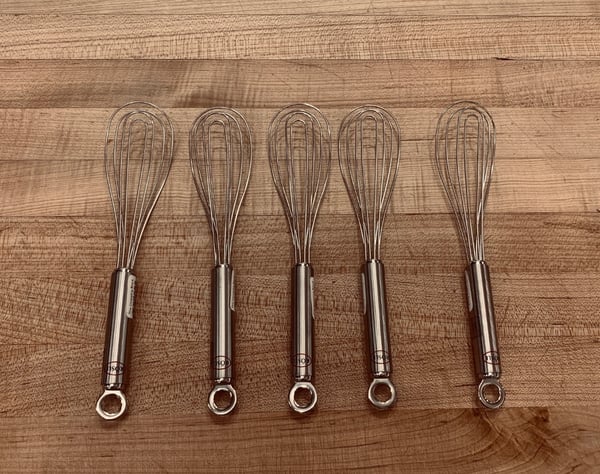
Rosle Flat Whisks
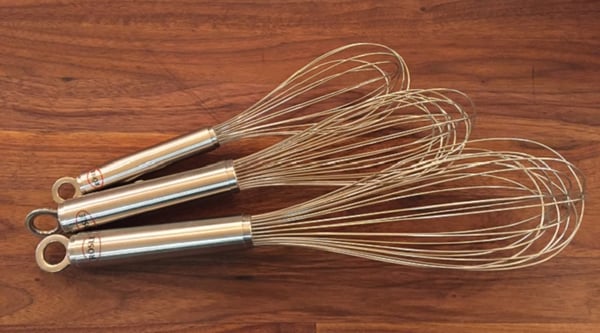
Rosle Egg Whisks
2. Strainers: You'll need a fine wire mesh strainer for straining sauces and a medium mesh strainer or colander for straining stocks and large ingredients from sauces.
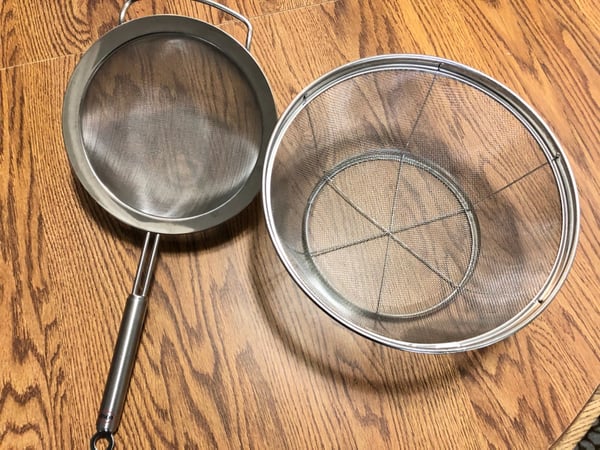
3. Cheesecloth: This is helpful for removing very fine particles from sauces.
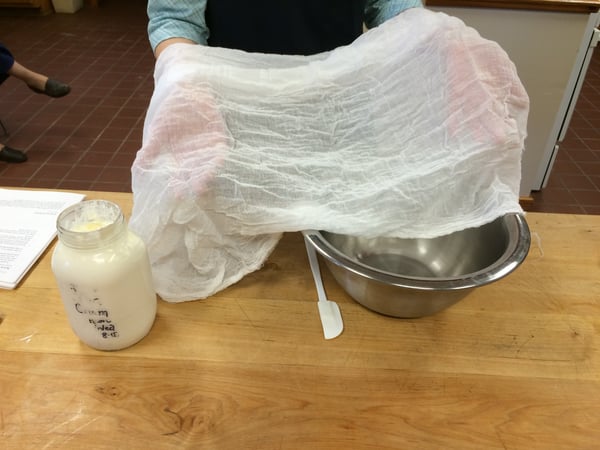
4. Pots: You'll need an 8-quart stock pot or larger for making stock (I like the tall pots for stock) and a 3 to 3 ½ quart sauce pan or saucier pan for making sauce.
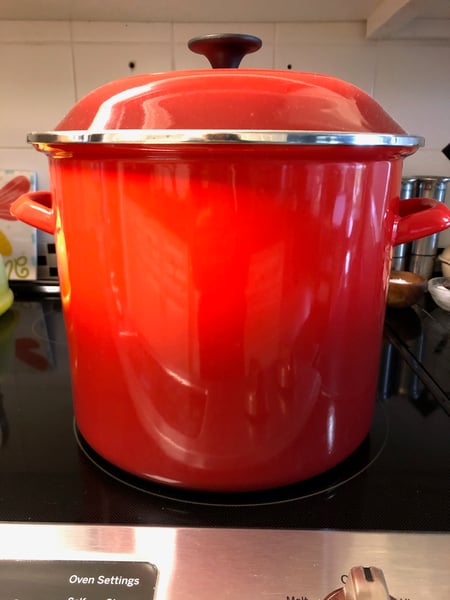
Stock pot
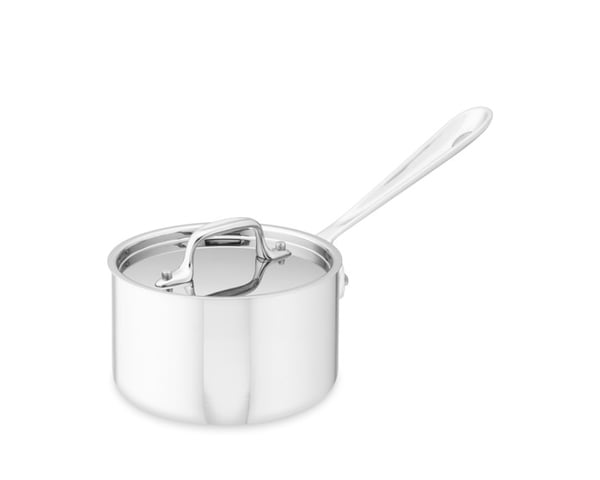
Sauce pan
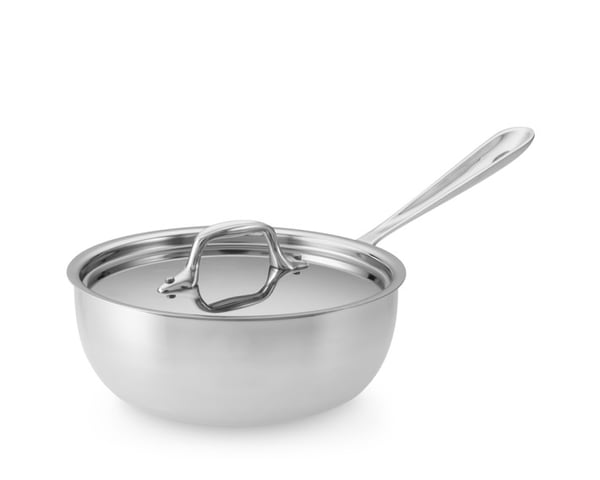
Saucier pan
5. Measuring Equipment: Liquid measuring cups and spoons
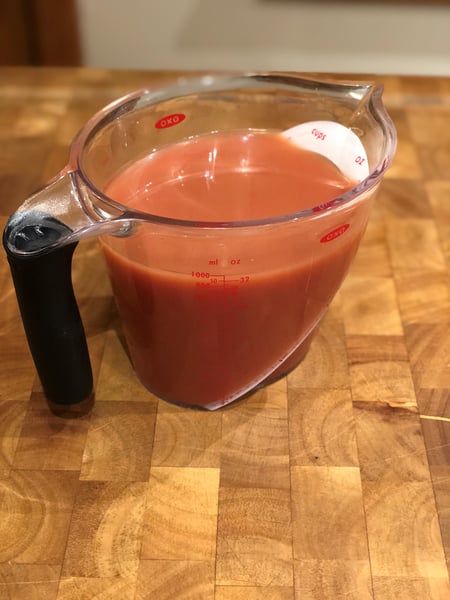
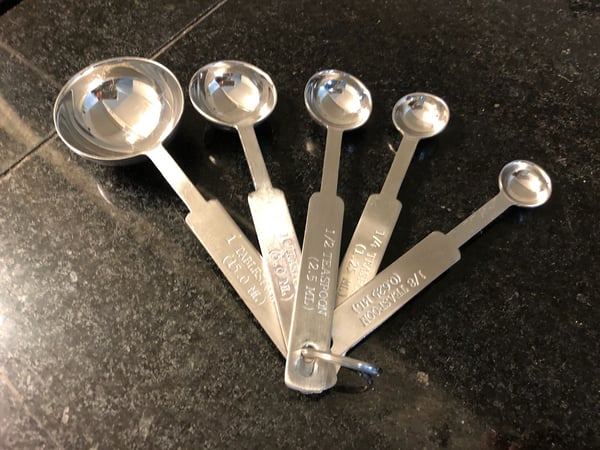
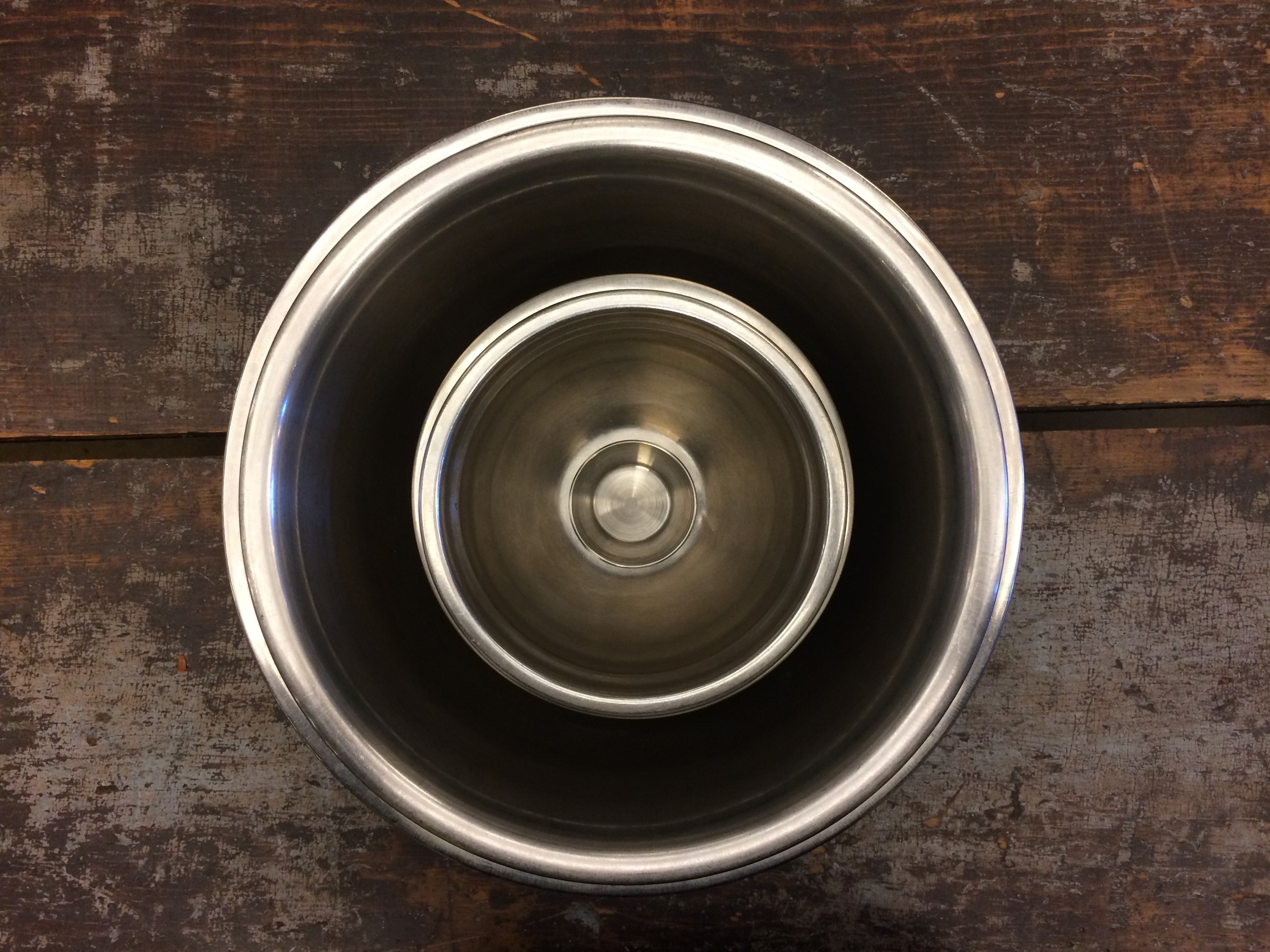
The following equipment is optional but very handy if you get serious about your sauce making:
1. Fat Separator: When you separate fat from the stock it is easier get proper liquid to roux ratios.
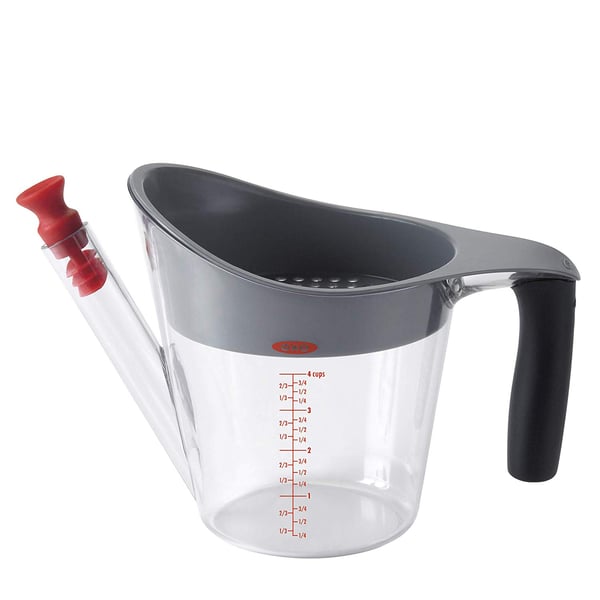
2. Food mill: This tool removes fine particles better and way faster than strainers and cheesecloth.
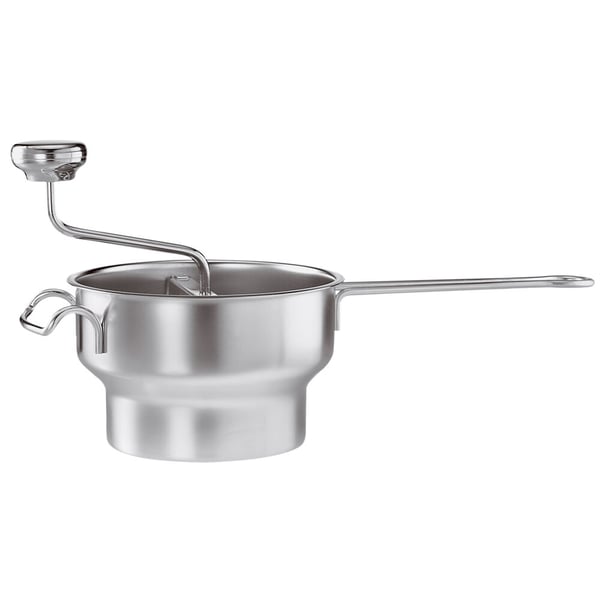
3. Vitamix: This blender is so powerful it can create velvety texture without straining.
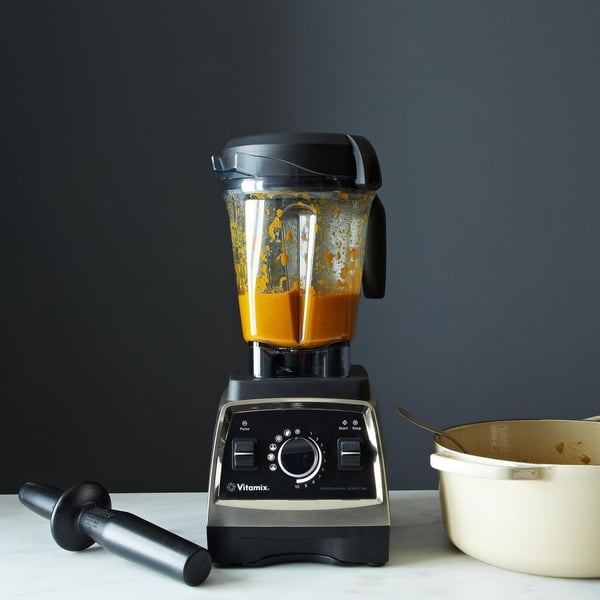
We carry many of these items at The Chopping Block if you feel like supporting your local business. We do not sell retail online so I included links to what I believe the best versions or representatives of each item for those of you who don’t live near us. I didn’t include a sharp knife, good cutting board, peeler or grater on this list. If you don’t have good ones, please run to your nearest store and pick these up, too!
Part 1: Velouté
In each part of this blog series, I will select one Mother sauce to highlight. I picked Velouté to start with because I think it is one of the most misunderstood sauces. I wouldn’t be surprised if half of you reading this are thinking I have never heard of a velouté nor have I ever had one. I can assure you the later is not true. Have you ever had a really well-done cream of Broccoli Soup or Clam Chowder? Not a gluey and gloppy bowl of sludge but something silky, light and rich… like velvet?
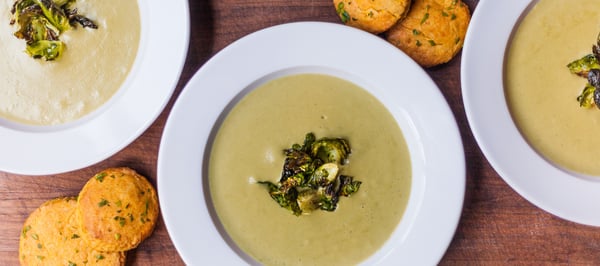
Brussels Sprout Soup
Velouté means velvet, and it is a texture that is relatively simple to achieve. Why did I mention a soup in my reference to Velouté? You see a thickened soup is a sauce at its base, and Velouté is the base for most soups. Velouté is a sauce made from light stock or white stock, seafood, chicken or vegetable stock. Clam chowder is basically a seafood sauce with pieces of potato and clams in it. Cream of broccoli soup generally has a chicken or vegetable stock base with broccoli added to it.
Our soups classes are as popular as our sauce classes, and I believe that is in part due to the fact that soup involves many of the same techniques as sauce making. We offer countless classes that feature soups throughout the colder months so I would encourage you to explore both sauce and soups classes at the same time. Thickened soups are sauces; master one and you’ll master both.
Tip 2
At its simplest, the definition of a sauce is a seasoned and thickened liquid. The secret to a great sauce is knowing how to thicken the sauces and how to get great flavor. Veloute, Espagnole and Bechamel have one thing in common, they are all thickened with roux.
- The Magic Recipe for ALL Roux-thickened Sauces and Soups
Essentially you need two ingredients to make these roux-thickened sauces: liquid and roux. Roux is equal parts of fat (usually butter) and flour cooked together for a few minutes, which thickens the liquid. The liquid is what distinguishes these three sauces Velouté (white stock-based sauce), Espagnole (brown stock-based sauce) and Bechamel (milk-based sauce). You can see why chefs stress about using a good quality stock. If the heart of the sauce is primarily two ingredients, they better be good.
We have some videos on making stock for your reference.
Make your roux in a sauce pan and whisk in the flavorful liquid, continue whisking and simmer and you have a sauce. Change the liquid and you can make countless sauces and soups with this one recipe. Change the amount of roux and change the thickness of the sauce. Here are three different consistencies to practice:
Sauce or Soup Consistency
- 1 Tablespoon of flour
- 1 Tablespoon of fat
- 1 cup of liquid
Uses:
- Finishing meats: Any sauce that is intended to be served over a piece of fish, meat, poultry, egg.
- Soups: Any thicker than this consistency for a soup becomes pasty. If you are making a soup with bacon in it, the bacon dripping will become the fat.
- Pasta or cheese sauces: It is especially important to use this thinner sauce for cheese sauces and pasta. When cheese is added, it will further thicken the sauce as will the starch from the pasta or potatoes.
Gravy Consistency
- 2 Tablespoons of flour
- 2 Tablespoons of fat
- 1 cup of liquid
Uses:
- Sausage Biscuits and Gravy: The fat is the sausage fat; the liquid is milk.
- Turkey Gravy: Turkey drippings provide the fat and turkey stock the liquid.
- Your preference, sometimes people just prefer a little thicker sauce, a more gravy style sauce… make it how you like it!
Filling Consistency
- 2 Tablespoons of flour
- 2 Tablespoons of fat
- 1 cup liquid
Uses:
- Croquettes: Extremely thick sauce is chilled and seasoned with roasted pepper or ham, rolled into balls, breaded and deep fried.
- Crab filling: To stuff mushrooms or a crepe, we would use this very thick consistency.
I do not expect you to be able to make all sauces after reading this blog, but I do hope this will jump start your sauce making! People love sauce, so if you can make a great sauce you are bound to impress.
I’ll be back with at least four more follow up blog. In the meantime, please take a peek at our free downloadable guide on How to make Great Sauces. Thanksgiving is right around the corner so check also out our video on How to make Gravy. In it, I highlight the technique we often use when using pan drippings where we achieve the proper thickness by adjusting the amount of liquid. Happy sauce making!

